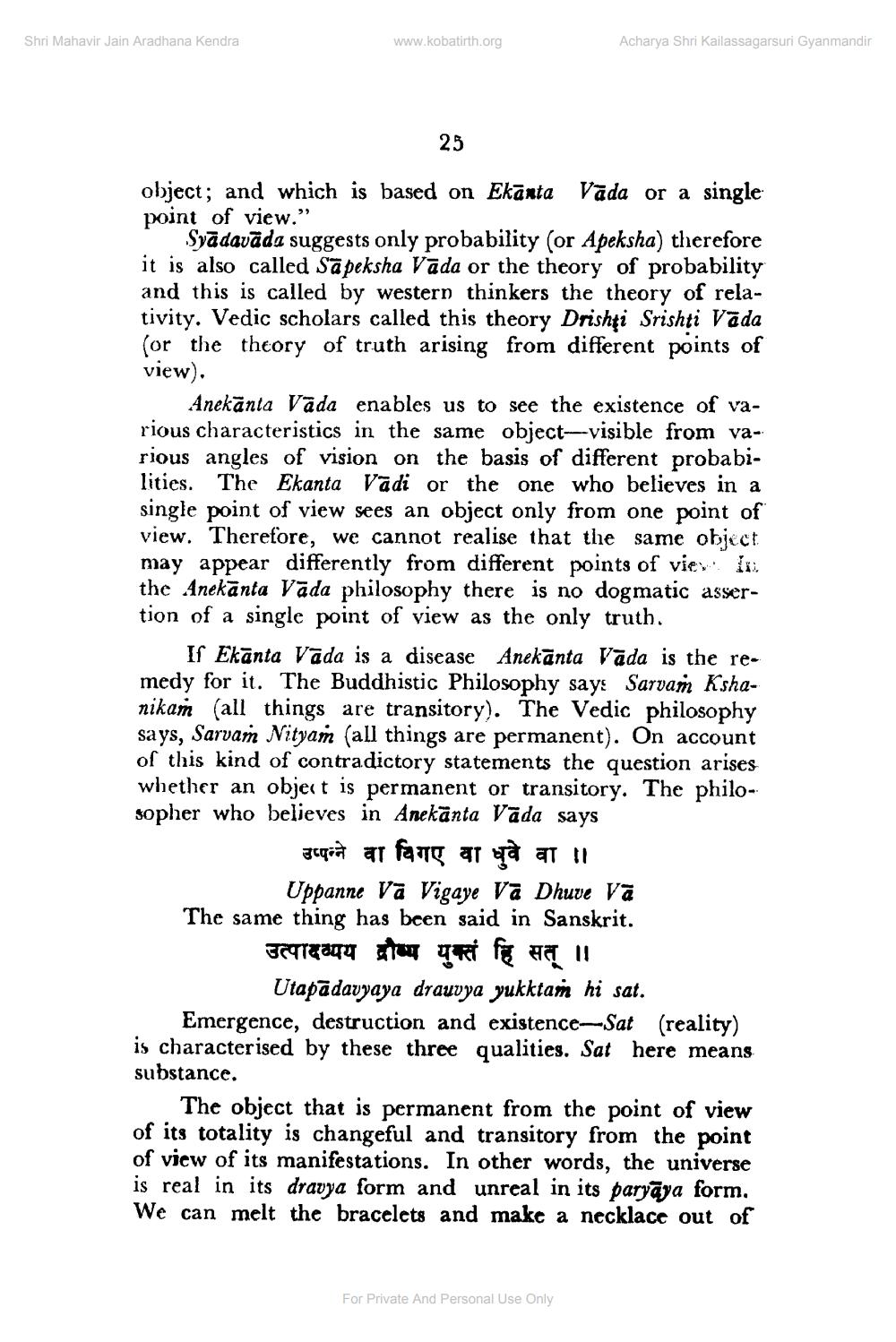________________
Shri Mahavir Jain Aradhana Kendra
www.kobatirth.org
Acharya Shri Kailassagarsuri Gyanmandir
25
object; and which is based on Ekanta Vada or a single point of view."
Syadavāda suggests only probability (or Apeksha) therefore it is also called Sapeksha Vada or the theory of probability and this is called by western thinkers the theory of relativity. Vedic scholars called this theory Drishti Srishti Vāda (or the theory of truth arising from different points of view).
Anekanta Vada enables us to see the existence of various characteristics in the same object-visible from various angles of vision on the basis of different probabilities. The Ekanta Vadi or the one who believes in a single point of view sees an object only from one point of view. Therefore, we cannot realise that the same object may appear differently from different points of view In the Anekanta Vada philosophy there is no dogmatic assertion of a single point of view as the only truth.
If Ekanta Vada is a disease Anekanta Vada is the remedy for it. The Buddhistic Philosophy says Sarvam Kshanikam (all things are transitory). The Vedic philosophy says, Sarvam Nityam (all things are permanent). On account of this kind of contradictory statements the question arises whether an object is permanent or transitory. The philosopher who believes in Anekānta Vāda says
उप्पन्ने वा थिगए वा धुवे वा ॥
Uppanne Va Vigaye Va Dhuve Vā The same thing has been said in Sanskrit. उत्पादव्यय द्रौम्य युक्तं हि सत् ॥
Utapadavyaya drauvya yukktam hi sat.
Emergence, destruction and existence-Sat (reality) is characterised by these three qualities. Sat here means
substance.
The object that is permanent from the point of view of its totality is changeful and transitory from the point of view of its manifestations. In other words, the universe is real in its dravya form and unreal in its paryaya form. We can melt the bracelets and make a necklace out of
For Private And Personal Use Only




